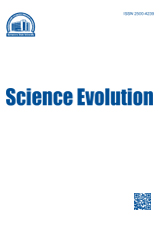Россия
Россия
ГРНТИ 27.01 Общие вопросы математики
ГРНТИ 31.01 Общие вопросы химии
ГРНТИ 34.01 Общие вопросы биологии
A theory of multiplicative functions and Prym differentials for the case of special characters on compact Riemann surfaces has found applications in geometrical function theory of complex variable, analytical number theory and in equations of mathematical physics. Theory of functions on compact Riemann surfaces differs from the theory of functions on finite Riemann surfaces even for the class of single meromorphic functions and Abelian differentials. In this article we continue the construction of the general function theory on finite Riemann surfaces for multiplicative meromorphic functions and differentials. We have proved analogues of the theorem on the full sum of residues for Prym differentials of every integral order and P. Appell's formula on expansion of the multiplicative function with poles of arbitrary multiplicity in the sum of elementary Prym integrals.
Teichmuller spaces for finite Riemann surfaces, Prym differentials, group of characters, Jacobi manifolds
1. Dick R. Krichever - Novikov - like bases on punctured Riemann surfaces. Lett. Math. Phys, 1989, vol. 18, pp. 255-265,
2. Chueshev V.V. Mul'tiplikativnye funktsii i differentsialy Prima na peremennoy kompaktnoy rimanovoy poverkhnosti. Chast' 2 [Multiplicative functions and Prym differentials on a variable compact Riemann surface. Part 2]. Kemerovo: KemSU Publ., 2003. 248 p.
3. Al'fors L.V., Bers L. Prostranstva rimanovykh poverkhnostey i kvazikonformnye otobrazheniya [Spaces of Riemann surfaces and quasiconformal mappings]. Moscow: IL Publ., 1961. 177 p.
4. Farkas H.M., Kra I. Riemann surfaces. New-York: Springer-Verl., 1992. 363 p.
5. Earle C.J. Families of Riemann surfaces and Jacobi varieties. Annals of Mathematics, 1978, vol. 107, pp. 255-286.
6. Tulina M.I., Chueshev V.V. Differentsialy Prima na peremennoy kompaktnoy rimanovoy poverkhnosti [Prym Differentials on a variable compact Riemann surface]. Matematicheskie zametki [Math Zametki], 2014, vol. 95, no. 3, pp. 459-476.
7. Kazantseva A.A., Chueshev V.V. Differentsialy Prima na konechnoy rimanovoy poverkhnosti [Prym Differentials on a Finite Riemann surface]. Sibirskiy matematicheskiy zhurnal [Siberian Mathematical Journal], 2012, vol. 53, no. 1, pp. 89-106.










